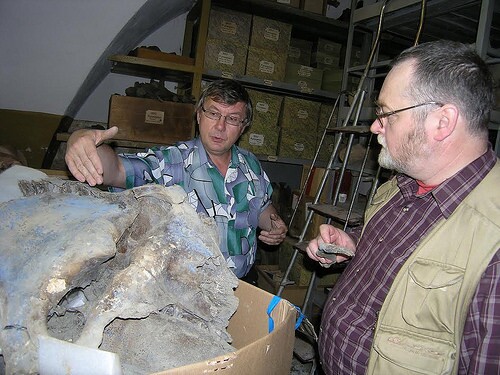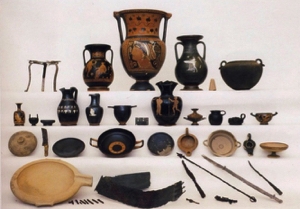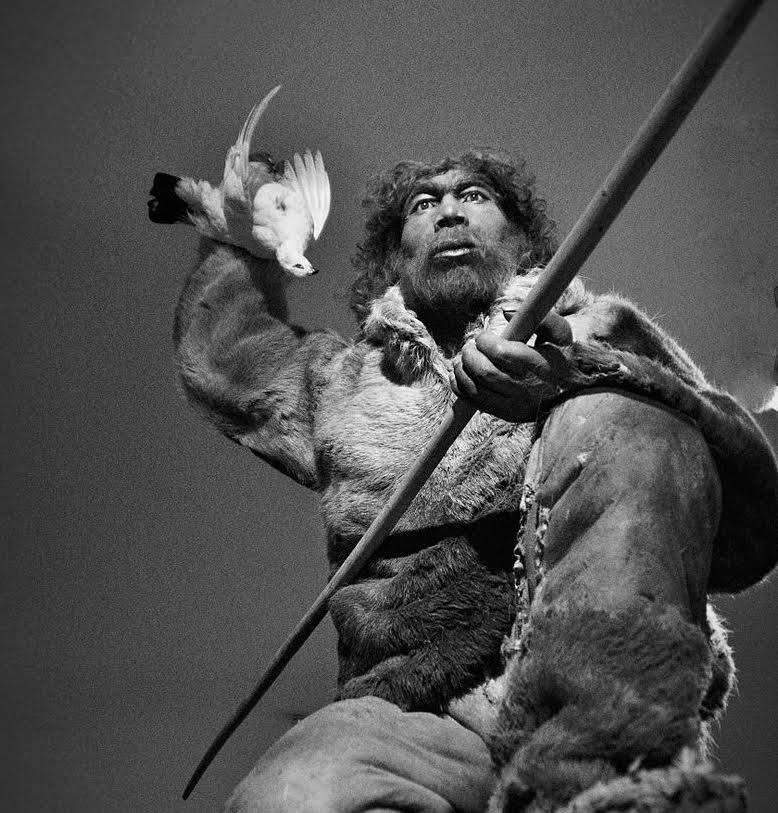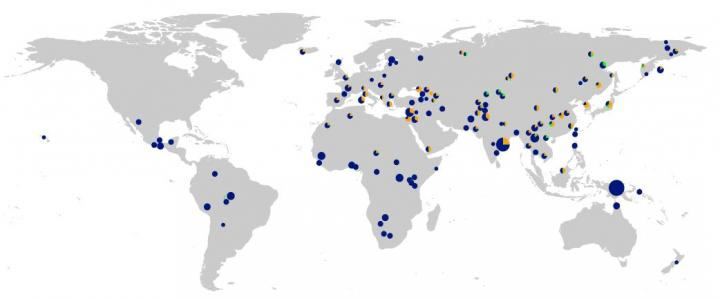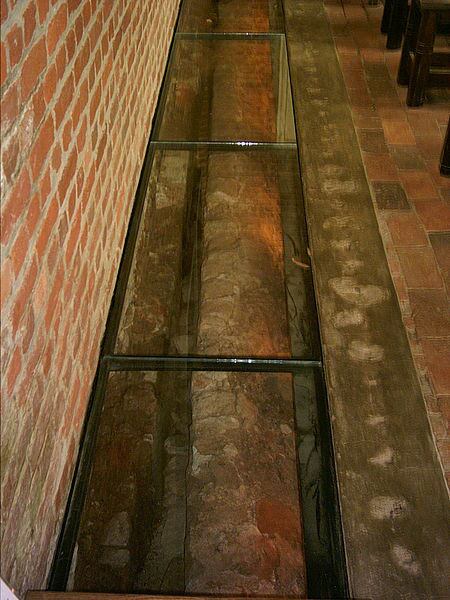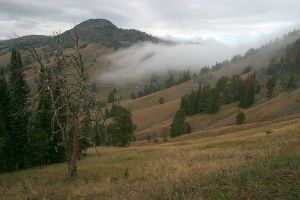
PHILADELPHIA, PA January 2016—What was behind the legendary story of King Midas and his golden touch?
That is the question to be answered—not with chests full of gold, but with a spectacular array of 150 objects, including more than 120 specially-loaned ancient artifacts from four museums in the Republic of Turkey, keys to telling the true story of a very real and powerful ruler of the Phrygian kingdom. The Golden Age of King Midas is an exclusive, world premiere exhibition developed by the Penn Museum, 3260 South Street in Philadelphia, in partnership with the Republic of Turkey. A special Opening Celebration on Saturday, February 13 kicks off the exhibition, which runs through November 27, 2016.
King Midas lived in the prosperous city of Gordion, a site in what is now central Turkey, circa 750–700 BCE, ruling Phrygia and influencing the neighboring kingdoms. He likely reigned during the time in which Homer’s Iliad was first written down. It was indeed a golden age.
Archaeologists from the Penn Museum (the University of Pennsylvania Museum of Archaeology and Anthropology) have been excavating at Gordion—and making international headlines with their discoveries—since 1950. The crossroads of many cultures over time, Gordion offers insight into thousands of years of history, but it is best known as the political and cultural capital of the Phrygians, a people who dominated much of what is now Turkey nearly 3,000 years ago. With its monumental architecture and a series of wealthy tombs belonging to Phrygian royalty and elites, Gordion has supplied the most important archaeological evidence for the unique material achievements of the once great Phrygian civilization.
From Myth to Man
Nearly 3,000 years after his death, we know King Midas by unforgettable stories told by ancient Greeks long after he was dead, stories like King Midas and the Golden Touch and King Midas and the Donkey Ears. An interactive “myth book” invites guests to explore the stories, while artifacts and excavation discoveries detailed throughout the exhibition begin to reveal the man behind the myths. The most extensive record of Midas’ activities comes from the annual records of the Assyrian kings, who referred to him as Mita, ruler of Mushku (Phrygia), on a clay tablet, ca. 713 BCE, on loan from the Oriental Institute of the University of Chicago for the exhibition.
A detailed timeline draws guests into the exhibition and back in time. It is at Gordion, where the story of Midas’ actual life and times truly emerges. One object from Greece takes center stage: an ivory lion tamer figurine on loan from the Delphi Archaeological Museum; it probably formed part of a throne dedicated by Midas to Apollo in the late 8th century BCE.
A Unique Opportunity
In 1957, the Penn Museum excavated a spectacular tomb, referred to as Tumulus MM, for Midas Mound. This was the largest of about 120 man-made mounds of earth, clay, and stone used to mark important burials at Gordion. Dated to ca. 740 BCE, it is believed to be the final resting place of King Midas’ father Gordios—a son’s spectacular tribute. The archaeologists entered the tomb, the oldest standing wooden building in the world, and beheld an extraordinary sight: the skeleton of a king in what was left of a cedar coffin, surrounded by the bronze bowls, serving vessels, wooden tables, and food remains from an extensive funeral banquet. The details of the banquet we now know thanks to the analysis of the sediment at the bottom of the vessels: a hearty lamb and lentil stew, and ample quantities of a drink containing wine, beer, and honey mead.
The discovery of an intact royal tomb nearly 3,000 years old is highly unusual, as is the excellent state of preservation of the associated artifacts.
_________________________________________
 A partial view inside Tumulus MM—the burial chamber of a Phrygian ruler, probably the father of King Midas. Tumulus MM is the oldest known intact wooden building in the world. Exhibited: One of the three cauldrons found inside the tomb, probably all used for beer, features two siren attachments and two bearded demon attachments. Bronze drinking bowls are scattered across the floor of the tomb chamber, dated to circa 740 BCE, and excavated by the Penn Museum in 1957. Photo: 1957, Penn Museum Gordion Archive, G-2390.
A partial view inside Tumulus MM—the burial chamber of a Phrygian ruler, probably the father of King Midas. Tumulus MM is the oldest known intact wooden building in the world. Exhibited: One of the three cauldrons found inside the tomb, probably all used for beer, features two siren attachments and two bearded demon attachments. Bronze drinking bowls are scattered across the floor of the tomb chamber, dated to circa 740 BCE, and excavated by the Penn Museum in 1957. Photo: 1957, Penn Museum Gordion Archive, G-2390.
_______________________________________________________

Exhibited: Detail of one of the three massive bronze cauldrons from Tumulus MM, tomb of a Phrygian ruler, probably the father of King Midas. The figure of a siren and the associated ring handle form one of four attachments on the cauldron. The cauldron probably once held an alcoholic beverage made of barley beer, grape wine, and honey mead, part of an elaborate funeral banquet for the deceased ruler. The cauldron dates to circa 740 BCE. It was excavated by the Penn Museum at Gordion in 1957. Dimensions—Height: 20.2 inches. Diameter: 30.7 inches (diameter at rim: 23 inches). Capacity: about 40 gallons [=150 liters]. Photo: Penn Museum Gordion Archive, 2014_4080.
__________________________________________________

Exhibited: A bronze double-pinned fibula (clothing attachment) with shield, from Tumulus MM. Excavated 1957. Middle Phrygian period, ca. 740 BCE. Photo: Penn Museum Gordion Archive, G-2561.
_____________________________________________________
Guests to The Golden Age of King Midas meet a life-sized photograph of archaeologist Rodney Young at the entrance of a space designed to resemble the wooden tomb and featuring many of the very objects the excavators first encountered. Inside this space, a video experience lets visitors explore the tomb as if they were in the tomb itself when it was sealed nearly 3,000 years ago. Now housed in Turkish Museums in Ankara, Istanbul, Antalya, and Gordion, most of these extraordinary artifacts have never before traveled to the United States. Site videos, including scenes taken during the world-famous excavation in 1957, bring guests into the moment of discovery.
There are no known visual records of what King Midas looked like, but if he resembled his father, there is some intriguing evidence. In 1988, the Penn Museum worked with Dr. John Prag and Richard Neave of Manchester University to develop a reconstructed plaster head of Gordios based on his skeletal remains; a plaster cast will be on display in the exhibition. With it is a selection from an assortment of 189 large bronze fibulae, used for pinning garments, that were found in King Midas’ father’s tomb and in others; they may have been used as calling cards at the elaborate funerals.
Objects from five smaller tombs excavated at Gordion—including a child’s tomb that contained an elegant and distinctive goat-shaped jug—provide more information about the site and the people who lived and died there. While no gold was found in the largest tomb, jewelry from a later tomb, ca. 530 BCE, is featured, including a distinctive gold acorn necklace.
Midas on the World Stage
Gordion is immense, about 2.5 miles wide. Penn Museum continues excavations and conservation projects on and around the citadel, a high fortress at the heart of Phrygia’s capital city, where hundreds of people lived and worked. A 3-D model of the citadel, enlivened by light and sound projections, offers guests a bird’s eye view. In the 1950s, archaeologists uncovered the oldest colored pebble mosaic floor known in the world in a large citadel building. Dated to the late 9th century BCE, it measures 35 by 31 feet; a recently conserved section of that floor, roughly five feet long, will be on display in the exhibition.
_______________________________________
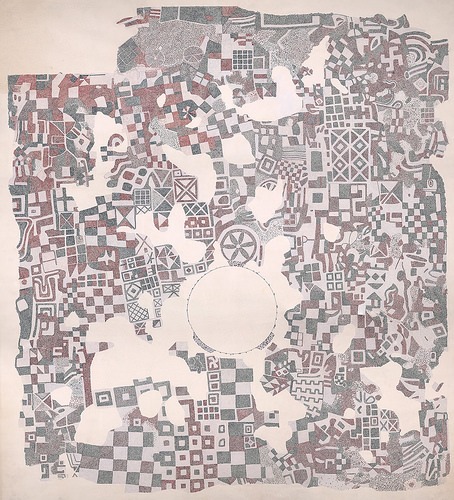
This watercolor is of a colored pebble mosaic floor in a large building—the earliest known pebble mosaic floor in the world—excavated inside the citadel at Gordion in central Turkey in 1956. The mosaic, which measures 35 x 31 feet, is dated to the late 9th century BCE. Photo of watercolor by Joseph Last, 1956, Penn Museum Gordion Archive, 400833, Plan1956-17.
___________________________________________________

Part of the colored pebble mosaic floor, the oldest known in the world, found in a large hall excavated inside the citadel at Gordion in 1956. One of 33 panels removed for conservation and display in 1963, this piece was newly conserved in the summer of 2015 by the team at Gordion. It dates to the late 9th century BCE. Photo: Penn Museum Gordion Archive, 2015_04663.
___________________________________________________
The story of King Midas is the story of influence and power on an international stage with neighboring kingdoms on all sides. Here, the Penn Museum’s own collections shine: visitors are introduced to the spectacular gold work of the nomadic Scythians and the Lydians; distinctive metalwork of the Urartian Empire; monumental stone and ivory reliefs of the Assyrians; and stone sculpture of powerful Persia, which conquered Gordion in the 6th century BCE. An animated map provides a flyover of the region during and just after Midas’ time.
Gordion After Midas
While the Phrygian period at Gordion is the most renowned, this strategically situated site contains thousands of years of history, and the exhibition sheds light on what happened in Gordion in the centuries after King Midas ruled.
Guests will see fragments—and remarkable watercolor recreations by renowned archaeological illustrator Piet De Jong—of the famous “Painted House” built about 500 BCE, and excavated in Gordion’s citadel during the 1950s. The Painted House murals provide a rare glimpse into the religious rituals of the citadel’s residents, and the lives of its women, 200 years after the death of King Midas.
One of the most important historical accounts involves Alexander the Great’s 333 BCE visit to Gordion, where he purportedly cut the “Gordian Knot.”
The Exhibition Team
Dr. C. Brian Rose, Penn Museum’s Gordion Archaeological Project Director, is the exhibition curator, and worked with Turkish colleagues to select the loaned artifacts. Kate Quinn, Exhibition and Public Programs Director, led the exhibition team that included in-house interpretive planner Jessica Bicknell, and a team of in-house designers, as well as outside collaborators including Night Kitchen Interactive and Wish Design, Painting and Sculpture.
The Golden Age of King Midas is made possible with support from the 1984 Foundation; the Selz Foundation; Frederick J. Manning, W69, and the Manning Family; the Susan Drossman Sokoloff and Adam D. Sokoloff Exhibitions Fund; the Turkish Cultural Foundation, and Joan Bachman in honor of Mary Bert Gutman.
Source: Penn Museum press release.
Does this interest you? See the in-depth free premium article, Uncovering the City of King Midas,for more about the news-making excavations at Gordion.
_________________________________________________________
Admission to the special exhibition The Golden Age of King Midas (includes general admission) is $20 adults; $18 senior citizens (65 and above); $15 for children and full-time students with ID; $5 for active military. Admission is free for Penn Museum members, PennCard holders, and children 5 and younger. For more information about membership, including exclusive membership Midas programs, call 215.898.5093.
The Penn Museum has developed a wide range of special events, from scholarly symposia to children’s and family programs for the exhibition. Visit www.penn.museum/midas beginning January 12 for event and Midas Touch hotel package details. For information on group tours and group rates, call Visitor Services at 215.746.8183.
___________________________________________________________

Read more in-depth articles about archaeology with a premium subscription to Popular Archaeology Magazine.
In addition, the latest Popular Archaeology ebook is now available.
______________________________________________
Travel and learn with Far Horizons.
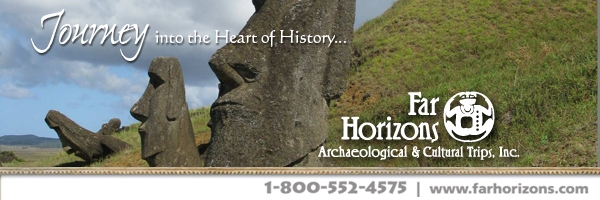
____________________________________________


This richly illustrated issue includes the following stories: Two remarkable discoveries that are shedding light on human beginnings in Africa; a traveling exhibit and an archaeological site that show how knowledge is more valuable than gold; a Spanish cave and a unique burial that are offering a tantalizing glimpse on the lives of Ice Age hunter-gatherers in Europe; the stunning visual reconstruction of an ancient Roman town; enlightening new finds at a remarkably well-preserved site of ancient Hellenistic-Roman culture overlooking the Sea of Galilee; rare finds that are shedding light on occult practices among ancient Greeks in Sicily; and an overview of the overwhelmingly rich archaeological heritage of Britain. Find it on Amazon.com.












